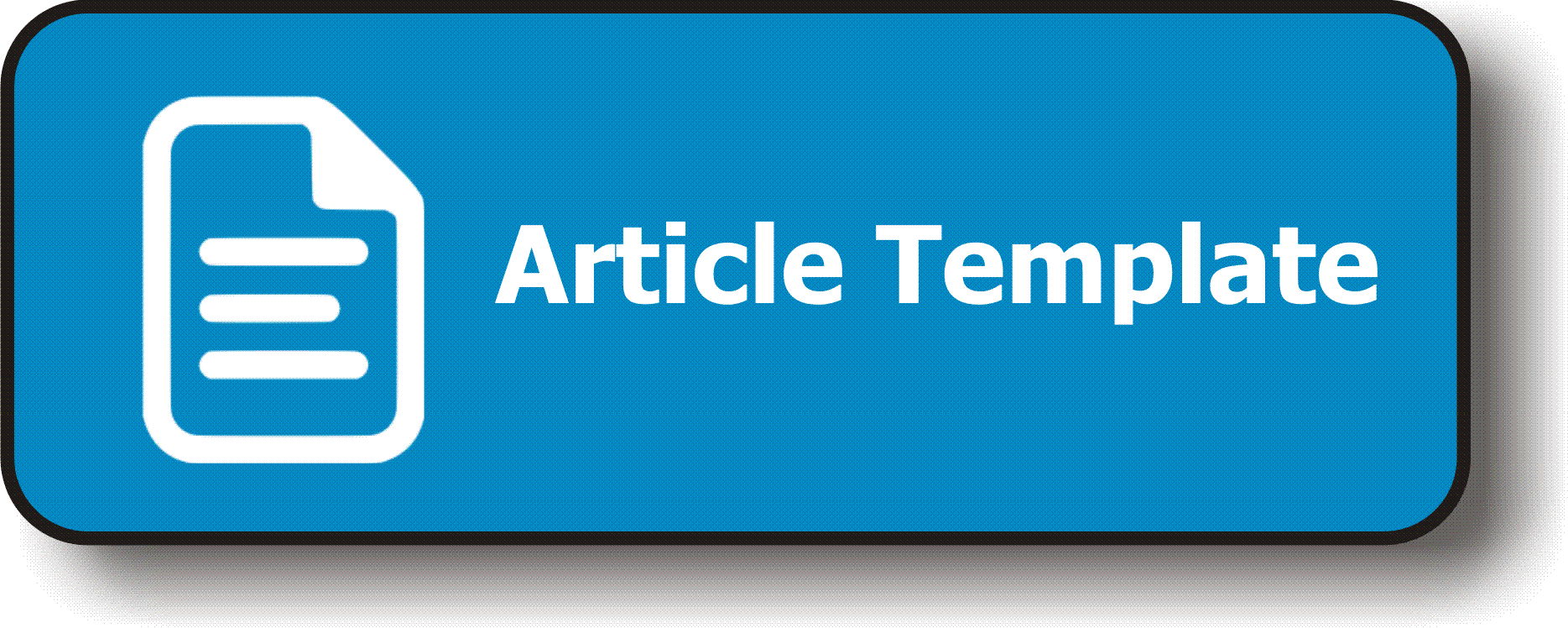Evaluation of Information Systems at the Library of the University of Sultan Azlan Shah
Abstract
Keywords
Full Text:
PDFReferences
Aghayev, B. (2017). Classification of the integrated information systems in libraries. Problems of information technology, 8(2), 94-100. https://doi.org/10.25045/jpit.v08.i2.11
Ahmad, M. (2016). Elektrokonvulsiv behandling (ect) med samtykke og på tvang (master's thesis).
An, J., Mikhaylov, A. Y., & Sokolinskaya, N. E. (2019). Machine learning in economic planning: Ensembles of algorithms. Journal of physics: Conference series, 1353(1), p. 012126). https://doi.org/10.1088/1742-6596/1353/1/012126
Chowdhury, G. G. (2016). How to improve the sustainability of digital libraries and information services?. Journal of the Association for Information Science and Technology, 67(10), 2379-2391. https://doi.org/10.1002/asi.23599
DeLone, W. H., & McLean, E. R. (2003). el of information systems success: a ten-year update. Journal of management information systems, 19(4), 9-30. https://doi.org/10.1080/07421222.2003.11045748
Firman, A., Wowor, H. F., & Najoan, X. (2016). Sistem informasi perpustakaan online berbasis web. Jurnal Teknik Elektro dan Komputer, 5(2), 29-36. https://doi.org/10.35793/jtek.5.2.2016.11657
Gakibayo, A., Ikoja-Odongo, J. R., & Okello-Obura, C. (2013). Electronic information resources utilization by students in Mbarara University Library. Library Philosophy and Practice, 869. https://digitalcommons.unl.edu/libphilprac/869
Kayser, L., Kushniruk, A., Osborne, R. H., Norgaard, O., & Turner, P. (2015). Enhancing the effectiveness of consumer-focused health information technology systems through eHealth literacy: a framework for understanding users' needs. JMIR human factors, 2(1), e3696. https://doi.org/10.2196/humanfactors.3696
Kuhlthau, C. C. (1988). Longitudinal case studies of the information search process of users in libraries. Library and information science research, 10(3), 257-304. https://eric.ed.gov/?id=EJ390898
Kwanya, T., Stilwell, C., & Underwood, P. G. (2013). Intelligent libraries and apomediators: Distinguishing between Library 3.0 and Library 2.0. Journal of Librarianship and Information Science, 45(3), 187-197. https://doi.org/10.1177/0961000611435256
Kylin, M., & Bodelius, S. (2015). A lawful space for play: conceptualizing childhood in light of local regulations. Children, Youth and Environments, 25(2), 86-106. https://doi.org/10.7721/chilyoutenvi.25.2.0086
Laumer, S., Maier, C., Eckhardt, A., & Weitzel, T. (2016). User personality and resistance to mandatory information systems in organizations: A theoretical model and empirical test of dispositional resistance to change. Journal of Information Technology, 31(1), 67-82. https://doi.org/10.1057/jit.2015.17
Lin, L. Y., Sidani, J. E., Shensa, A., Radovic, A., Miller, E., Colditz, J. B., ... & Primack, B. A. (2016). Association between social media use and depression among US young adults. Depression and anxiety, 33(4), 323-331. https://doi.org/10.1002/da.22466
Littman, J., & Connaway, L. S. (2004). A circulation analysis of print books and e-books in on academic research library. Library resources and technical services, 48(4), 256-262.
Lwoga, E. T. (2013). Measuring the success of library 2.0 technologies in the African context: The suitability of the DeLone and McLean's model. Campus-Wide Information Systems. https://doi.org/10.1108/CWIS-02-2013-0011
Mahajan, D., Kim, J. K., Sacks, J., Ardalan, A., Kumar, A., & Esmaeilzadeh, H. (2018). In-RDBMS hardware acceleration of advanced analytics. arXiv preprint arXiv:1801.06027.
Mailasari, M., & Sikumbang, E. D. (2019). Metode Waterfall Dalam Implementasi Aplikasi Perpustakaan Berbasis Dekstop. Sistemasi: Jurnal Sistem Informasi, 8(3), 341-352. https://doi.org/10.32520/stmsi.v8i3.466
Okike, B. O. (2019). Securing the information systems of libraries and the influence of tech-skills of librarians and users. Education and Information Technologies, 24(2), 1583-1602.
Persatuan Puskawan Malaysia. (2018). Standard Perpustakaan Universiti University Library Standards. Kuala Lumpur: Academic libraries-Standards-Malaysia.
Puspitasari, D. (2016). Sistem informasi perpustakaan sekolah berbasis web. Jurnal Pilar Nusa Mandiri, 12(2), 227-240.
Radityo, D., & Zulaikha, Z. (2007). Pengujian Model DeLone and McLean Dalam Pengembangan Sistem Informasi Manajemen (Kajian Sebuah Kasus). Undip.ac.id. https://doi.org/http://eprints.undip.ac.id/15193/1/SI-_05.pdf
Restuccia, F., Ghosh, N., Bhattacharjee, S., Das, S. K., & Melodia, T. (2017). Quality of information in mobile crowdsensing: Survey and research challenges. ACM Transactions on Sensor Networks (TOSN), 13(4), 1-43. https://doi.org/10.1145/3139256
Rusdiana, H. A., & Irfan, M. (2018). Sistem Informasi Manajemen. Bandung: CV Pustaka Setia.
S,Noerhayati. (1987). Pengelolaan Perpustakaan. Bandung : Alumni
Saha, P. (2017). Use of OPAC system by library users and its servces at Kiit University: A study.“. Knowledge Librarian” An International Peer Reviewed Bilingual E-Journal of Library and Information Science, 4(6), 176-183.
Sapty Rahayu, F., Apriliyanto, R., & Sigit Purnomo Wuryo Putro, Y. (2018). Analisis Kesuksesan Sistem Informasi Kemahasiswaan (SIKMA) dengan Pendekatan Model DeLone dan McLean. Indonesian Journal of Information Systems, 1(1), 34–46. https://doi.org/10.24002/ijis.v1i1.1704
Spreafico, C., & Spreafico, M. (2021). Using text mining to retrieve information about circular economy. Computers in Industry, 132, 103525. https://doi.org/10.1016/j.compind.2021.103525
Sulistyo-Basuki. (1991). Pengantar Ilmu Perpustakaan. Jakarta: PT Gramedia.
Wanchai, P., Andrade, A. D., & Techatassanasoontorn, A. A. (2012). Adjusting to mandatory information systems: understanding individual adaptation to ERP systems. In CONF-IRM 2012 Proceedings. Association for Information Systems AIS Electronic Library (AISeL).
Xia, Y., Mitchell, K., Ek, M., Sheffield, J., Cosgrove, B., Wood, E., ... & Mocko, D. (2012). Continental‐scale water and energy flux analysis and validation for the North American Land Data Assimilation System project phase 2 (NLDAS‐2): 1. Intercomparison and application of model products. Journal of Geophysical Research: Atmospheres, 117(D3). https://doi.org/10.1029/2011JD016048
Zhou, B., & Liu, W. (2013, October). Architectural requirements for regional library & information service system: An approach to data integration in cloud. In Proceedings of 2013 3rd International Conference on Computer Science and Network Technology, 454-457. IEEE. https://doi.org/10.1109/ICCSNT.2013.6967152
DOI: https://doi.org/10.17509/edulib.v12i1.51495
DOI (PDF): https://doi.org/10.17509/edulib.v12i1.51495.g27440
Refbacks
- There are currently no refbacks.
Copyright (c) 2022 Edulib

This work is licensed under a Creative Commons Attribution-NonCommercial-ShareAlike 4.0 International License.

This work is licensed under a Creative Commons Attribution-ShareAlike 4.0 International License.





